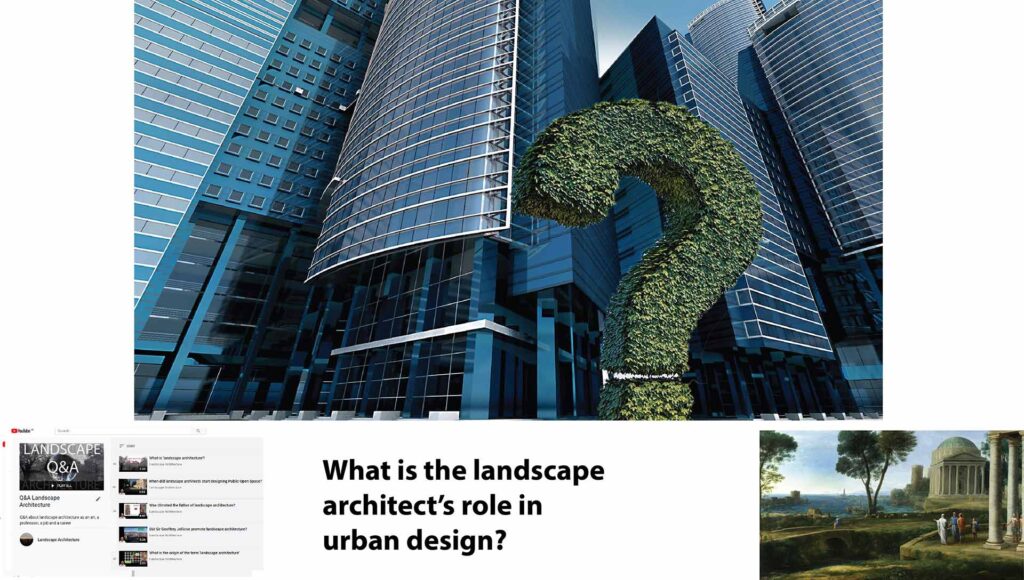What is the landscape architect’s role in urban design? Q&A

Question: What is the relationship between landscape architecture and urban design?
Short answer: The landscape architect’s contribution to urban planning and design is that of composing landform, water and plants with buildings and pavings – to make good outdoor space
Longer answer: The Wikipedia entry on Urban Design states, correctly, that ‘it deals with issues of a larger scale than architecture’ and that ‘urban design theory deals primarily with… the way public places are used and experienced’. This is important and necessary but it is far from sufficient. So its time to consider whether landscape history and theory can provide what’s required for design at a scale which is ‘larger than architecture’. Should landscape architects make occasional contributions, like a cymbal player in a symphony concert? Or should we ‘conduct the orchestra’ of the urban design professions? Neither. The role of landscape architects in urban design is that of a composer. We compose landform, water and vegetation with buildings and pavings to make places with good functional, ecological and aesthetic qualities.
And one of the best ways to learn this skill is through the design of gardens. They have the same compositional elements as cities, and fewer complications. So they are excellent crucibles in which to test urban designs – just as chemists use crucibles to test reactions before they build a new manufacturing plant.
The most famous examples of the progression from garden design to urban design include: Sixtus the Fifth’s plan for Rome, Baron Haussmann’s plan for Paris, L’Enfant’s plan for Washington DC and John Nash’s plan for London’s ‘processional route’ from St James’s Park to Regent’s Park. The design concepts for these projects were developed in gardens and then applied at the city scale.
Do landscape architects prepare urban designs?
Yes. Urban design is inter-disciplinary and the landscape architect’s role on the project team is to compose landscape elements (buildings, landform, water, plants etc) in relation to what exists on the land before the urban design project is begun.
